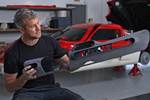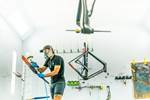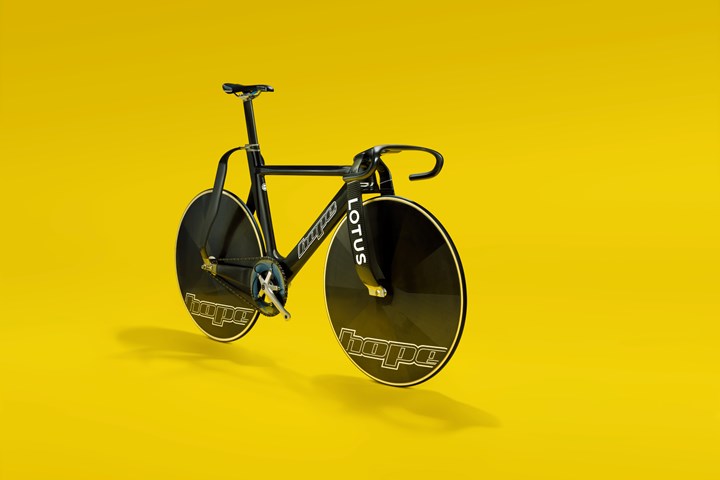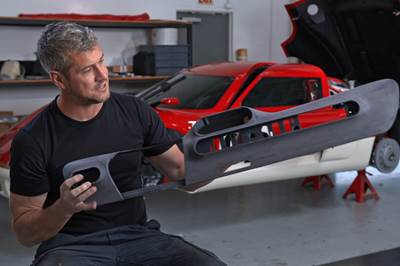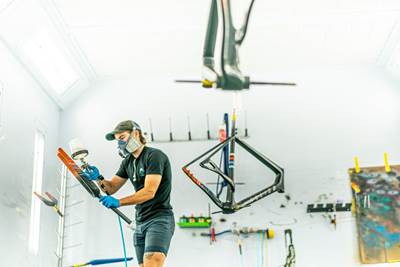Lotus Engineering innovates track bike for Paris Olympics 2024
Expertise from Lotus’ automotive projects in design, advanced engineering, lightweighting and product development are used to produce solutions in the wider transport and personal mobility sector.
Lotus Cars (Hethel, U.K.), a sports car and hypercar manufacturer, has announced the continuation of its collaboration with British Cycling (Manchester, U.K.) with the development of a new track bike for Team GB riders to use at the 2024 Paris Olympic Games. The division of the business which delivers this and other consultancy work is Lotus Engineering, internationally recognized for its long-standing contribution to design, collaborative advanced engineering and innovative product development for OEMs, suppliers and other businesses. Lotus is also known for using lightweight materials, which include aluminium and composites, to create multi-functional, high-performing body structure modules.
The new bike’s development is the focus of the final chapter of the Lotus Engineering: The Innovators series, which turns the spotlight on the fourth of its core portfolio pillars — the Technical Services it offers to clients. These include intelligent design, product concept, attribute development and advanced materials, all of which are integral to the British Cycling project. The three other pillars covered previously are Platforms, Control Systems and Dynamics.
“Technical Services is about what we can supply throughout the entire product development process,” Mark Stringer, commercial director, Lotus Engineering, says. “We take the core principals we have gained from automotive development, where we have a global pedigree, to develop solutions across the wider mass transportation and personal mobility sectors.”
The partnership with British Cycling is just one example of Lotus Engineering’s collaborations, most of which remain confidential at clients’ request. The consultancy’s involvement with two-wheelers has already included co-development of the track bike for the Tokyo Olympics 2020. However, it stretches back to the early ‘90s and the Lotus Type 108 — the LotusSport Pursuit Bicycle — a concept that showcased a distinctive monocoque design, advanced carbon fiber composite construction and, with its aerofoil cross-section, what is said to have been a pioneering approach to aerodynamics.
“Back then, it was simply about developing an aerodynamic bike that would go fast,” Richard Hill, chief aerodynamicist for Lotus, notes. “But really there are two separate elements — the bike and the rider — which come together as one to move through the air. That was the approach we took with the Tokyo bike and is continuing for Paris 2024.”
Beyond the technical, Lotus Engineering regularly calls on the Lotus Design team as an integral part of its service offering. The latter, based at Hethel, Norfolk, since it was established in 1985, has developed several other two-wheeled projects including motorcycles and scooters. Russell Carr, director of design at Lotus notes, “We’re able to apply the experience we have gained in automotive to other forms of mobility.”
The design studio at Hethel is a contemporary and purpose-built facility which, like other areas on site, has received considerable investment in recent years. The virtual reality/augmented reality (VR/AR) suite and 3D printing equipment is state-of-the-art, the company says, as is the milling studio. Photometric scanning fully supports the design process with large format and portable optical scanners.
Hethel is also home to three secure studios with integrated surface plates and workspace for designers, digital modelers and studio engineers. A secure presentation room with a four-meter screen is also part of the facilities.
“The implementation of these upgrades at Hethel has fundamentally changed how we work and how we communicate with clients,” Russell explains. “The VR/AR suite and online data reviews give us an increased global reach, offering the client the opportunity to review 3D digital models from anywhere in the world, either on screen or through immersive headsets.”
Read Next
Stratasys produces 500 3D-printed parts for the Lotus Type 62-2 coachbuilt sports car
Numerous 3D-printed composite mounting brackets, exterior components and a solid firewall sandwich core bring 1960s-style supercar automaking into the 21st century.
Read MoreCycling forward with bike frame materials and processes
Fine-tuning of conventional materials and processes characterizes today’s CFRP bicycle frame manufacturing, whether in the large factories of Asia or at reshored facilities in North America and Europe. Thermoplastic resins and automated processes are on the horizon, though likely years away from high-volume production levels.
Read MoreVIDEO: High-volume processing for fiberglass components
Cannon Ergos, a company specializing in high-ton presses and equipment for composites fabrication and plastics processing, displayed automotive and industrial components at CAMX 2024.
Read More

